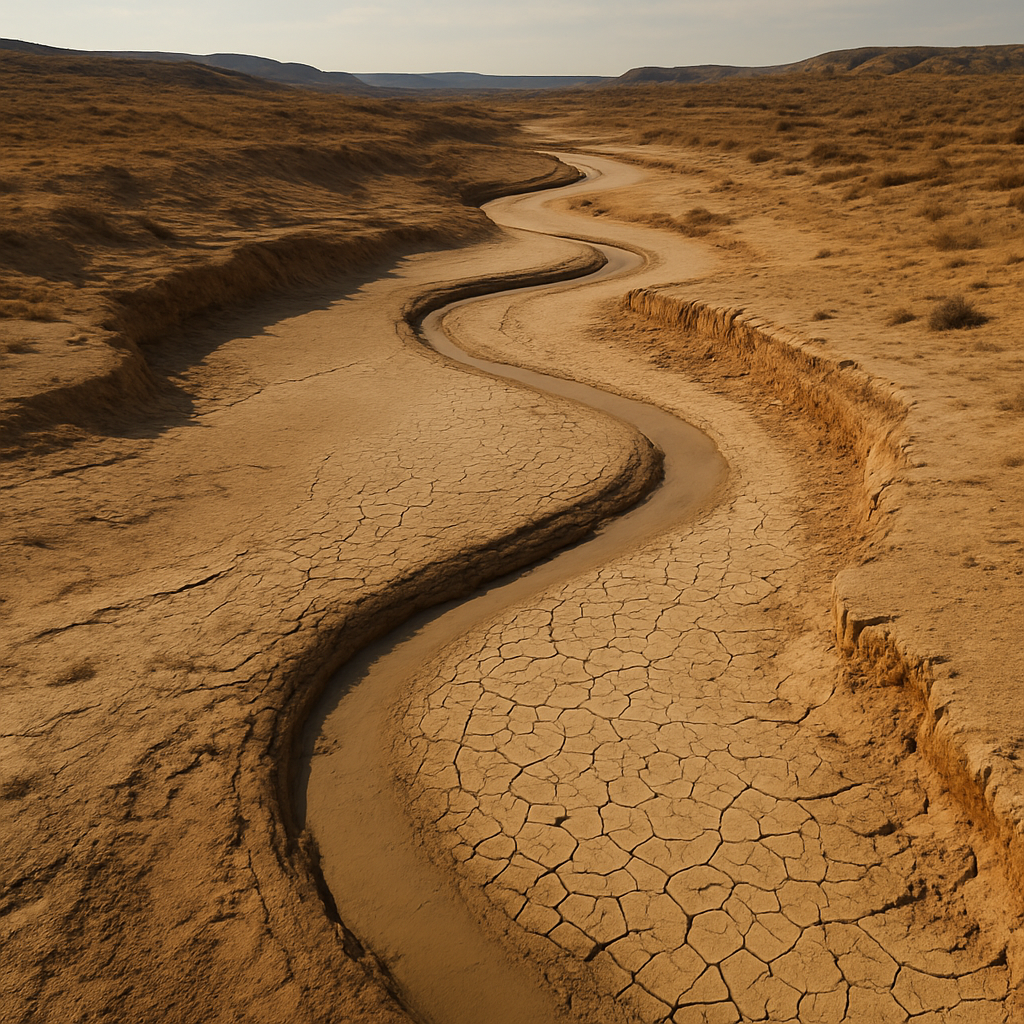Across continents, rivers that once surged with power and vitality are beginning to disappear. From the Yangtze in China to the Colorado in the American Southwest, the mighty rivers that once carved valleys, sustained civilizations, and fed vast ecosystems are now trickling shadows of their former selves.
The culprits are many—climate change, unchecked dam construction, industrial farming, and political mismanagement—but the outcome is the same. As global temperatures rise and populations grow, freshwater scarcity is becoming one of the defining crises of the 21st century.
The Colorado River: A Reservoir of Broken Promises
Perhaps no river better illustrates the problem than the Colorado River. Once a roaring artery through the American West, the Colorado now fails to reach the sea. Sapped by agriculture, sucked dry by Phoenix and Las Vegas, and rerouted by decades of water deals made in wetter times, the river is on life support.
Lake Mead and Lake Powell—the two largest reservoirs in the U.S.—have dropped to historically low levels, exposing deadpool thresholds that could soon cut off water supplies for millions.
Climate scientists point to persistent megadrought conditions that have gripped the Southwest for over two decades, exacerbated by record-breaking heatwaves and dwindling snowpack in the Rockies.
Water managers now face an impossible task: deciding who gets less—farmers, cities, or nature itself.
The Amazon River: Dying From the Headwaters Down
In South America, the Amazon is shrinking—not just in length, but in flow. In 2023, the Amazon Basin experienced its worst drought in over a century, exposing riverbeds, halting transportation, and devastating aquatic life.
The Amazon River and its countless tributaries are affected by deforestation, illegal mining, and warming temperatures, all of which change rainfall patterns and increase evaporation rates.
But the problem runs deeper. Hydroelectric mega-dams like Brazil’s Belo Monte have rerouted natural flows, killing off fish species and disrupting indigenous communities. The Amazon, once thought too large to fail, is now teetering on the edge of a hydrological collapse.
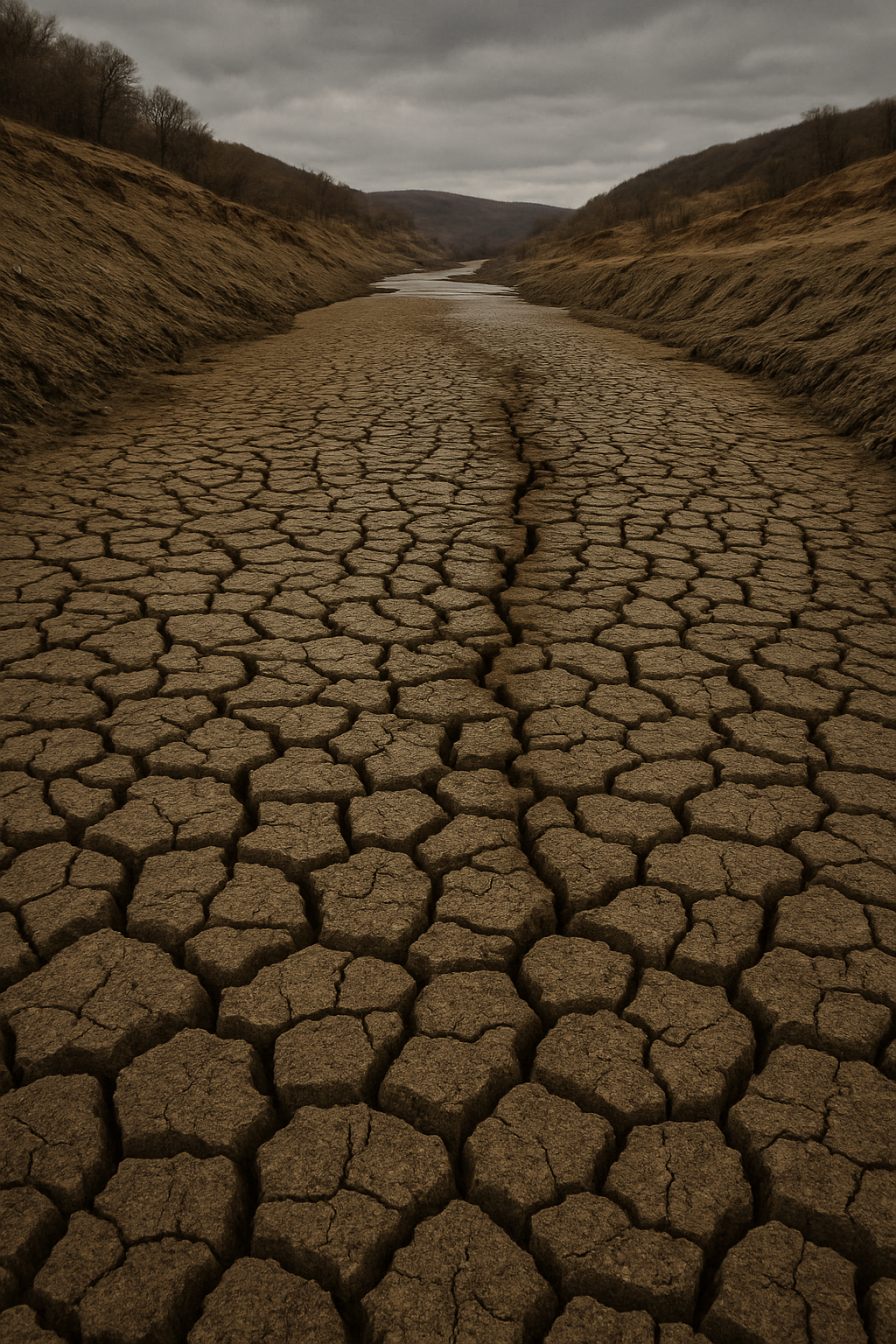
From the Indus to the Mississippi: rivers under pressure in every hemisphere.
The Indus and Ganges: Rivers in a Pressure Cooker
In South Asia, two of the world’s most densely populated river systems are facing simultaneous threats.
The Indus River, which supports Pakistan’s agriculture and drinking water, is drying due to glacial melt, upstream damming in India, and intense heatwaves. As the glaciers of the Himalayas retreat, short-term flooding is giving way to long-term drought.
Meanwhile, the Ganges River—sacred and life-giving to hundreds of millions—is choking on industrial waste, raw sewage, and increasingly erratic seasonal flows.
Experts warn that a regional water war is no longer a distant scenario. With India and Pakistan already at odds over territory and ideology, water scarcity could become the next flashpoint.
Dams: Engineering Marvels or Ecological Mistakes?
The 20th century hailed dam-building as a symbol of human progress. But the 21st century is dealing with the ecological hangover.
More than 60,000 large dams now block the world’s rivers, and they’ve fragmented over two-thirds of all major rivers. These structures:
- Disrupt fish migrations
- Alter sediment transport
- Drown wetlands
- Raise downstream salinity levels
In China, the Yangtze River—home to the Three Gorges Dam—has seen drastic ecological changes. Several native species, including the Yangtze river dolphin (baiji), are now presumed extinct. Water that once flowed freely to the East China Sea now arrives sluggish, if at all.
Worse still, many of the world’s largest dams are aging—creating not just environmental risks, but structural safety threats for downstream communities.
When Rivers Die, So Do Ecosystems
Rivers are more than water—they are life corridors. They sustain wetlands, recharge aquifers, support forests, and serve as migratory paths for birds and fish.
As rivers shrink, entire ecosystems unravel:
- Freshwater fish populations have declined by over 80% globally since 1970.
- Delta regions, such as the Nile and Mekong, are sinking and salting as sediment fails to reach them.
- Mangrove forests, which protect coasts from storms, depend on healthy river flows. Many are now retreating inland—or vanishing.
Even insect populations are declining in riparian zones, throwing off pollination cycles and food chains. The death of rivers isn’t just about thirst—it’s about ecological cascade.
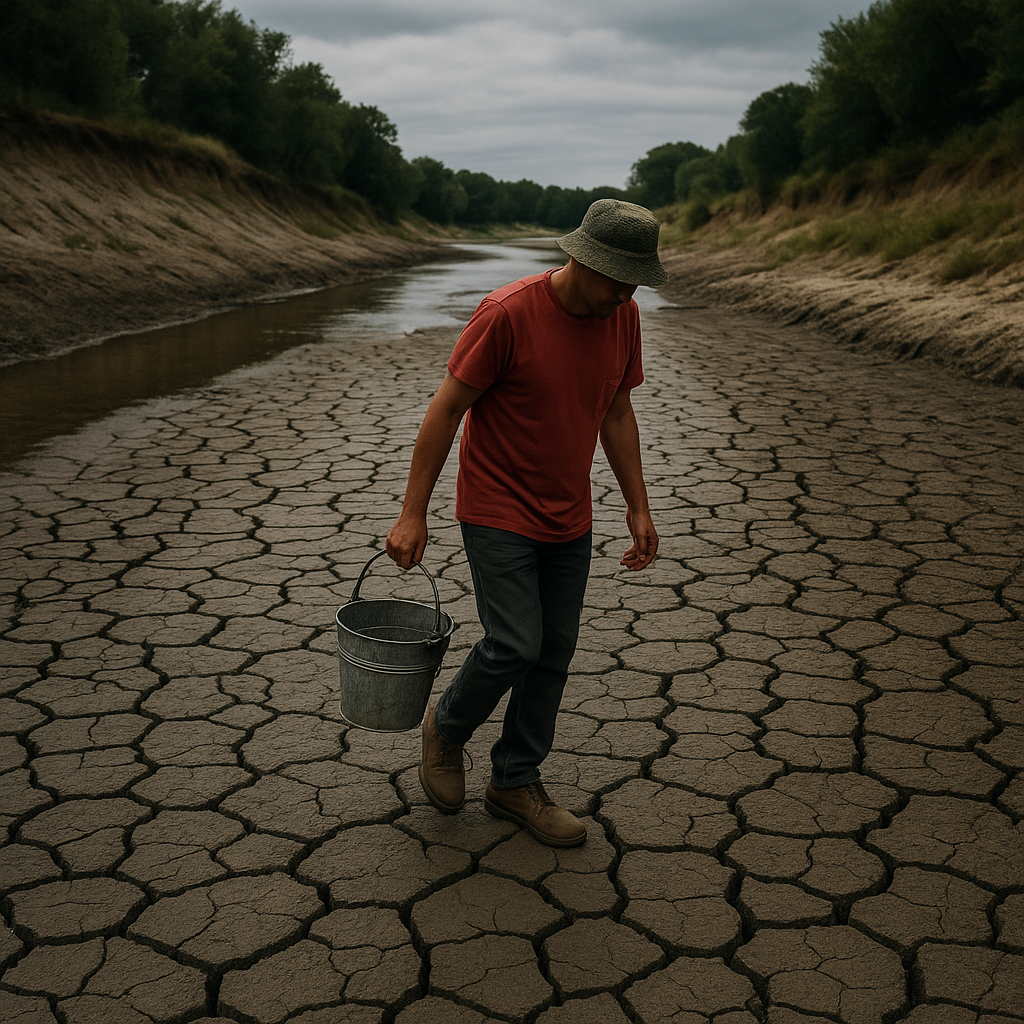
The cost of control: downstream communities pay the price of damming and drought..
The Human Cost: From Conflict to Collapse
For humans, vanishing rivers mean more than empty faucets. It means:
- Food insecurity as crops fail from irrigation loss
- Energy shortages as hydropower becomes unreliable
- Migration as people flee parched or flooded regions
- Political instability as upstream and downstream nations clash over shrinking supplies
Already, we’ve seen:
- Iran and Afghanistan skirmish over the Helmand River
- Egypt, Ethiopia, and Sudan face tension over the Grand Ethiopian Renaissance Dam
- Bolivia and Chile in disputes over cross-border flows from melting Andean glaciers
This is hydropolitics—and it’s only just beginning.
Nature’s Warning System: Rivers as Barometers of Climate Health
What makes rivers unique is that they’re not just resources—they’re reflections. A healthy river often mirrors a healthy climate and landscape. When a river begins to die, it’s a signal flare—a warning that an entire biome is out of balance.
For example:
- Diminishing flows in Canada’s Fraser River signal not just climate warming, but changing snowmelt cycles
- Drops in Africa’s Niger River expose the continent’s vulnerability to desertification and chaotic rainfall
- Lower water levels in Siberia’s Lena River warn of Arctic permafrost destabilization
Each river is a pulse. And more of them are flatlining.
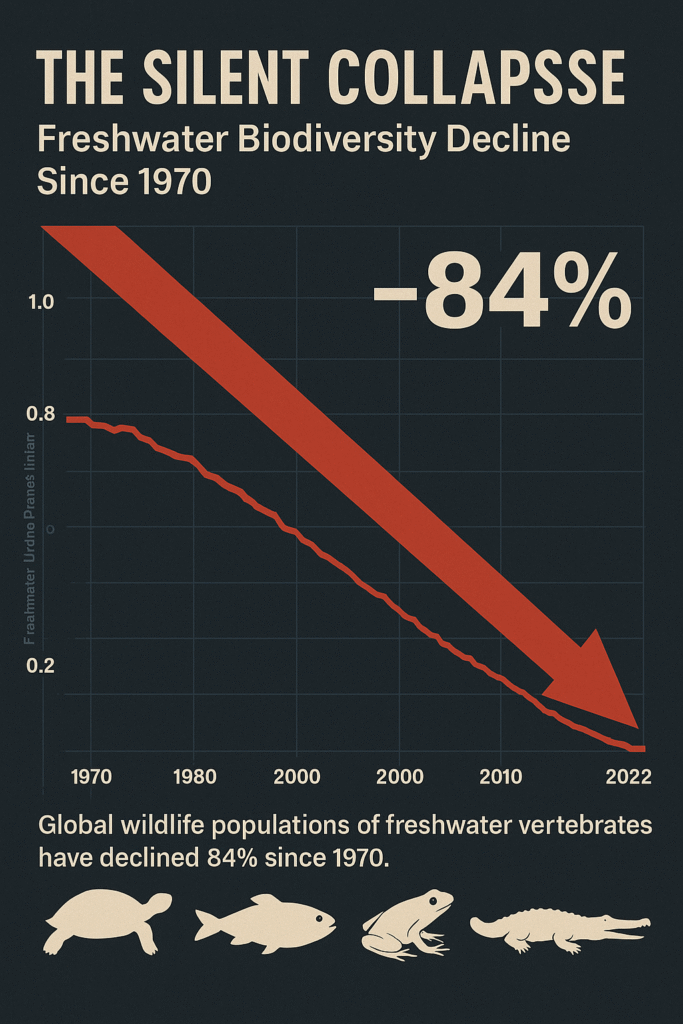
The silent collapse: freshwater ecosystems are the most threatened on Earth.
The Way Forward: Restoration, Rewilding, and Restraint
Despite the dire news, rivers can be revived. It’s been done.
- The Yellowstone River in the U.S. has seen native fish return after dam removal.
- Europe’s “Dam Removal Movement” has decommissioned over 6,000 obsolete structures.
- Wetland restoration in the Danube Delta has recharged aquifers and increased biodiversity.
Solutions include:
- Reforesting watersheds to retain rainfall
- Investing in decentralized water systems like rain capture and graywater reuse
- Rethinking agriculture to be less water-intensive
- Rewriting international water treaties to reflect modern realities, not colonial-era assumptions
But the greatest solution of all may be the hardest: letting rivers be rivers again.
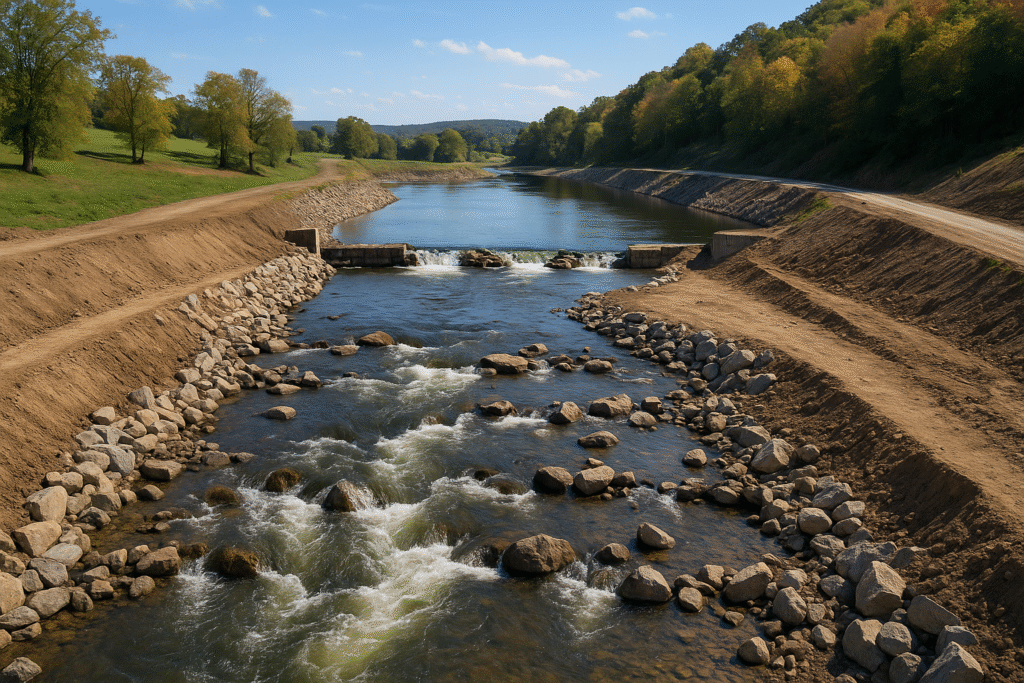
When dams are broken, rivers run free again, life returns.
Conclusion: A Crisis With No Substitute
We can live without oil. We can adapt to digital revolutions and political upheaval. But we cannot live without water.
As climate change intensifies and population pressures grow, vanishing rivers are not just a symptom—they are the center of the story. Civilization began with rivers. Its future depends on them still.
The next time you hear about a river shrinking halfway across the globe, remember: you’re not just hearing about them. You’re hearing about us.
